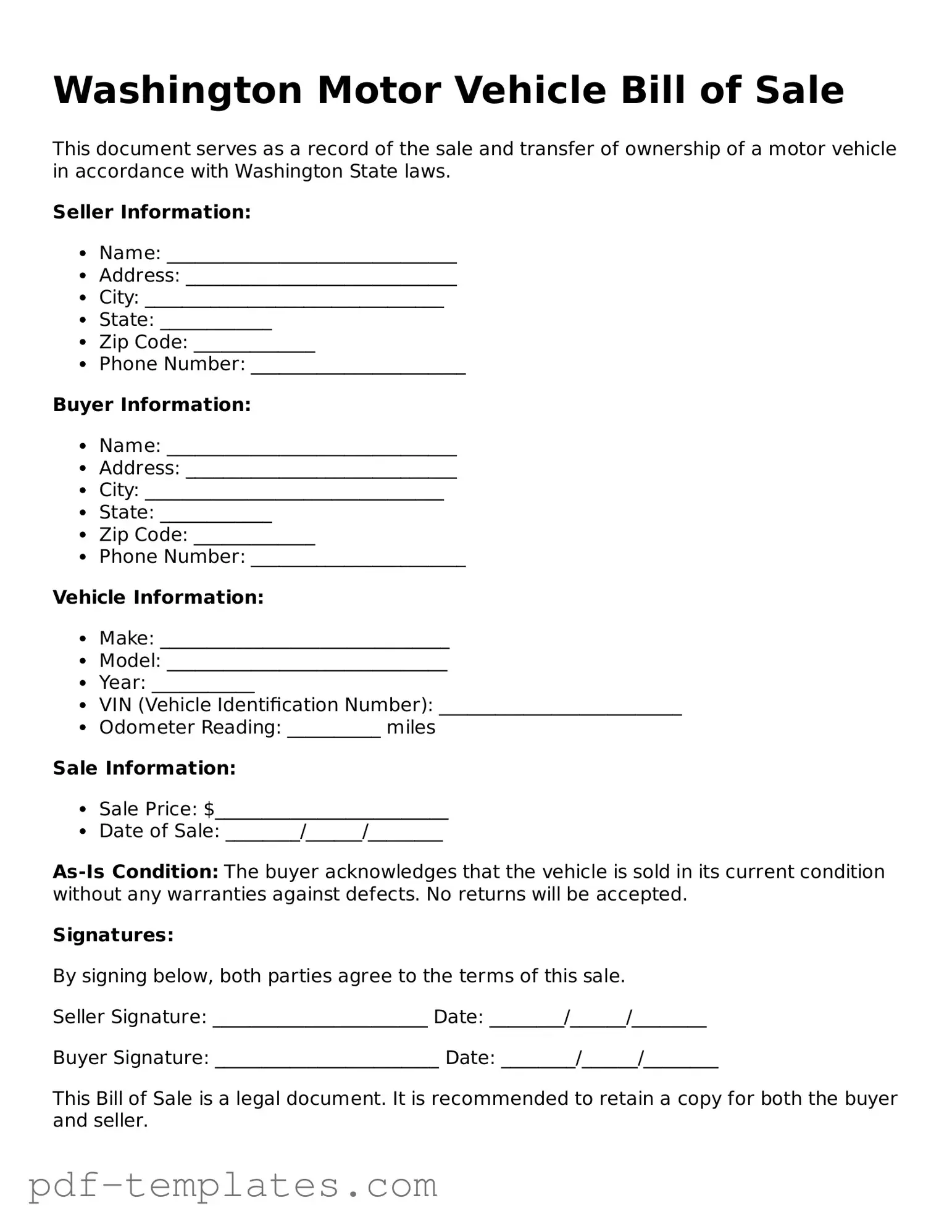The Vehicle Title Transfer form serves a similar purpose to the Washington Motor Vehicle Bill of Sale. This document officially transfers ownership of a vehicle from the seller to the buyer. It includes essential details such as the vehicle identification number (VIN), the names and addresses of both parties, and the sale price. While the Bill of Sale is often used for record-keeping and proof of sale, the title transfer is crucial for legal registration and ownership documentation with the Department of Licensing.
The Odometer Disclosure Statement is another important document related to vehicle sales. This form is required by federal law when a vehicle is sold, ensuring that the buyer is informed of the vehicle's mileage at the time of sale. Similar to the Bill of Sale, it protects both parties by providing a clear record of the vehicle's condition and history. It helps prevent fraud related to odometer tampering, which can affect the vehicle's value and safety.
The Purchase Agreement is akin to the Washington Motor Vehicle Bill of Sale in that it outlines the terms of the sale. This document details the buyer's and seller's responsibilities, payment terms, and any warranties or guarantees associated with the vehicle. While the Bill of Sale serves as proof of the transaction, the Purchase Agreement lays out the expectations and obligations of both parties, making it a critical document in the sale process.
The Vehicle Registration form is also similar, as it is necessary for the legal operation of a vehicle on public roads. This document must be completed after a sale to officially register the vehicle under the new owner's name. It typically requires information found in the Bill of Sale, such as the VIN and sale price, and serves as a legal acknowledgment of ownership by the state.
The Affidavit of Vehicle Sale is another document that complements the Bill of Sale. This form is often used when the original title is lost or unavailable. It provides a sworn statement regarding the sale and ownership of the vehicle. By signing this affidavit, the seller asserts that they are the rightful owner and have the authority to sell the vehicle, thereby protecting the buyer from potential legal disputes.
The lien release form is significant when a vehicle is sold with an outstanding loan. This document indicates that the loan has been paid off and that the lender no longer has a claim on the vehicle. Similar to the Bill of Sale, it is essential for ensuring that the buyer receives clear title to the vehicle, free from any encumbrances that could affect their ownership rights.
The Warranty Deed, while typically associated with real estate, can also be relevant in vehicle transactions involving warranties. This document serves to convey the seller's promise regarding the vehicle's condition and any defects. Just as the Bill of Sale provides proof of transaction, a Warranty Deed assures the buyer that they are receiving a vehicle that meets certain standards, offering additional protection in the sale.
Finally, the Insurance Declaration page is relevant in the context of vehicle sales. This document outlines the insurance coverage for the vehicle being sold. While the Bill of Sale confirms the sale, the Insurance Declaration ensures that the buyer understands their insurance responsibilities upon ownership transfer. It is essential for legal compliance and provides peace of mind for both parties involved in the transaction.
